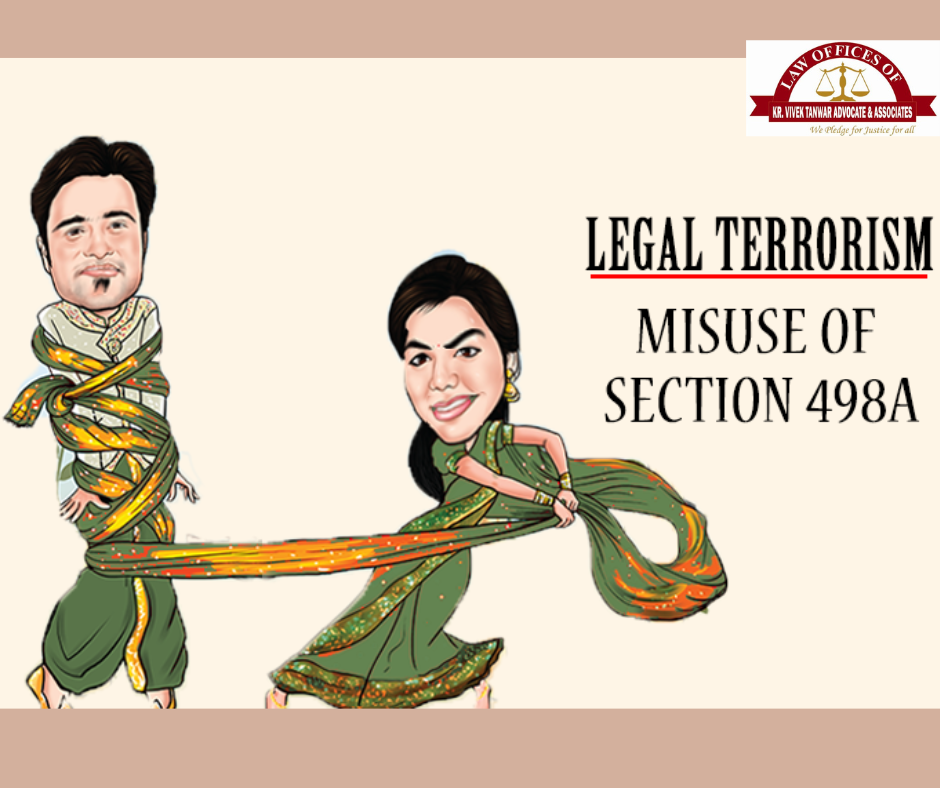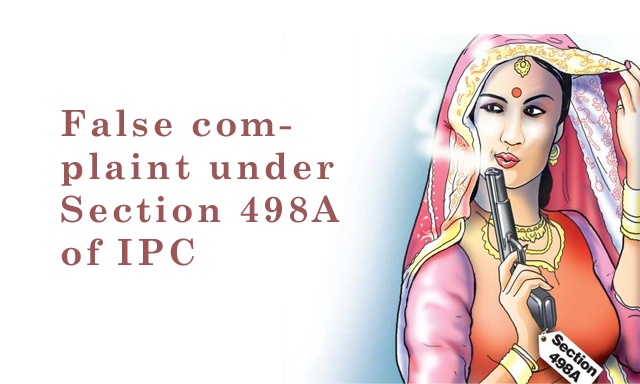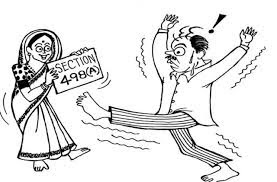Section 498A of the Indian Penal Code (IPC) was enacted with the noble intention of protecting married women from cruelty and harassment by their husbands and in-laws. However, over the years, it has garnered notoriety for its rampant misuse, leading to serious implications for individuals and families. This article provides an in-depth analysis of Section 498A IPC, exploring its historical background, legal provisions, misuse patterns, and the need for reforms. Through a comprehensive examination of case law, empirical studies, and legislative proposals, this article aims to shed light on the challenges posed by the misuse of Section 498A and propose measures to address them.
Introduction:
Section 498A of the Indian Penal Code, inserted in 1983, aimed to curb the menace of cruelty and harassment against married women. However, its misuse has become a matter of grave concern, leading to arrests and harassment of innocent individuals. This article delves into the origins of Section 498A, its legal provisions, and the pervasive misuse it has witnessed. Furthermore, it explores the adverse consequences of misuse and advocates for reforms to ensure the law serves its intended purpose without causing undue harm.

Meaning of Section 498A
Section 498A of IPC came as a significant addition to the Indian Penal Code, 1860, which was introduced in 1983 to safeguard the rights and empowerment of women. Under Section 498A of the Indian Penal Code, extortion of any form of property by subjecting a woman to cruelty is punishable. The Government of India amended the Indian Penal Code, 1860 (IPC) by way of the Criminal Law (Second Amendment ) Act, 1983 on 26 December 1983, and inserted a new Section 498(A) under Chapter XX-A, Of Cruelty By Husband Or Relatives Of Husband.
Historical Background and Legal Provisions:
- Origins of Section 498A:
- Section 498A was introduced as part of the Criminal Law (Second Amendment) Act, 1983, in response to rising instances of dowry-related harassment and cruelty against women.
- Legal Provisions:
- Section 498A IPC: Deals with the offense of cruelty by a husband or his relatives towards a married woman.
- Punishment: Imprisonment for up to three years and fine.
Ingredients of this Section
For the commission of an offence under Section 498-A, following necessary ingredients require to be satisfied:
- The woman must be married;
- She must be subjected to cruelty or harassment; and
- Such cruelty or harassment must have been shown either by the husband of the woman or by the relative of her husband.
This section’s bare perusal points out that the word ‘cruelty’ covers the occurrence of the following Act(s):
- any willful behaviour which might lead a woman to suicide or cause serious damage or danger to life, limb, or life;
- a woman’s health (mental or physical);
- The harassment of a woman in the event of such harassment, with a view to obliging her or any other person related to her to fulfil an illegal requirement for any property or valuable security.
Patterns of Misuse:
- False Complaints and Vexatious Litigation:
- Section 498A is often misused as a tool for settling personal scores, extracting monetary benefits, or harassing spouses and their families.
- False complaints and exaggerated allegations are filed, leading to arrests and protracted legal battles.
- Arrests Without Evidence:
- The provision for immediate arrest under Section 498A, coupled with the presumption of guilt, has resulted in arbitrary arrests without sufficient evidence.
- Innocent individuals, including elderly parents and distant relatives, are often ensnared in legal proceedings without due process.
- Misuse in Matrimonial Disputes:
- Section 498A is frequently invoked as a weapon in matrimonial disputes, leading to the breakdown of families and irreparable damage to relationships.
- Cases of misuse have tarnished the credibility of the legal system and eroded public trust in the administration of justice.

Impact of Misuse:
- Stigmatization and Social Fallout:
- Accused individuals and their families face social ostracization, stigma, and reputational damage, irrespective of their innocence.
- The mere registration of a Section 498A case tarnishes the reputation and standing of the accused in society.
- Strain on Legal System:
- Rampant misuse of Section 498A contributes to the backlog of cases in Indian courts, delaying justice for genuine victims and litigants.
- Scarce judicial resources are expended on frivolous cases, impeding the resolution of more pressing legal matters.
- Erosion of Family Values:
- Misuse of Section 498A exacerbates tensions within families, fostering acrimony and discord instead of promoting reconciliation and resolution.
- Children are often the silent victims of marital discord and legal battles, bearing the brunt of familial strife and instability.
Recovery in case of false accusations
In the case where there are false allegations put on the men by his wife and he has proved innocent in the eyes of the law. He can fight the case misuse of 498A. The Indian government and jurisprudence continue to incorporate inputs to protect women, and men are not ignored by law either. Justice still takes precedence over injustice. Thus, the men whose reputation is defamed with false allegations that opt for some legal recovery measures and seek protection from Section 498A IPC. These are:
- Under Section 500 of the Indian Penal Code, the husband can file a defamation lawsuit;
- Under Section 9 of the CPC, the husband can file a claim for recovery of damages which he and his family have been subjected to for the false allegations of cruelty and abuse;
- Section 182 of the IPC is one of the safeguards against false 498A cases widely used. If the authority considers that the averages rendered were invalid, under Section 182 of the IPC, the culprit is sentenced to 6 months or fine imprisonment, or both. The person will be charged for misleading false information on the part of the judiciary.
Reform Imperatives:
- Safeguards Against Misuse:
- Introduction of procedural safeguards, such as mandatory preliminary investigation and counseling, to prevent arbitrary arrests and false complaints.
- Implementation of stricter penalties for filing false complaints under Section 498A to deter frivolous litigation.
- Alternate Dispute Resolution Mechanisms:
- Encouragement of mediation, conciliation, and family counseling to resolve matrimonial disputes amicably and prevent escalation to legal proceedings.
- Awareness and Sensitization:
- Educational campaigns and awareness programs to disseminate accurate information about Section 498A and its implications.
- Sensitization of law enforcement agencies, judiciary, and society at large to the nuances of marital disputes and the need for balanced interventions.
Conclusion:
Section 498A of the Indian Penal Code, enacted with the laudable objective of protecting married women from cruelty and harassment, has unfortunately become one of the most misused provisions in Indian law. The pervasive misuse of Section 498A has had far-reaching implications, ranging from the erosion of trust in the legal system to the breakdown of familial relationships. Urgent reforms are needed to address the systemic issues contributing to the misuse of Section 498A and ensure that it serves its intended purpose without causing undue harm to innocent individuals and families. By implementing safeguards, promoting alternative dispute resolution mechanisms, and fostering awareness and sensitization, India can mitigate the adverse consequences of misuse and uphold the principles of justice, fairness, and equality in matrimonial disputes.
Adv. Khanak Shrama

